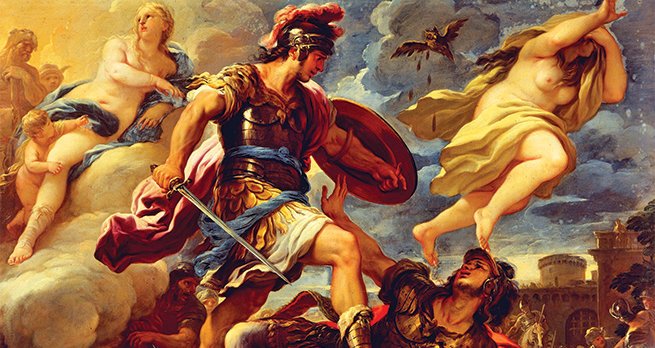1.3 Politics and Roman identity
However, as we’ll see, Virgil’s story doesn’t only deal with the heroic past, but looks forward to his own time. Virgil had lived through a generation of violence, as successive warlords had torn the Roman Republic apart in their struggles for power. This culminated in the rise of the young Octavian, the adopted son of Julius Caesar, who defeated his rivals Antony and Cleopatra at the Battle of Actium (31 bce) and established himself as ruler of Rome, with the new name Augustus. Virgil was working on the Aeneid throughout the 20s bce, by which time Augustus had imposed stability, but the traumas of the past were still a recent memory. Several passages in the Aeneid use prophecy or supernatural knowledge to refer directly to historical events of Virgil’s own day. These passages identify and praise Augustus himself, and Virgil hopes for a new era of peace under his rule. However, the Roman future is not limited to these passages; rather, Virgil uses his mythological setting and characters to reflect upon what it means to be a Roman, and draws links between the past and the present. Thus the struggles that Aeneas and his companions face in Italy are relevant to the broad questions of how a good Roman should live, the values he should hold, and how he should deal with difficult situations.
In this course I’ll be guiding you through some of the crucial passages in the Aeneid that deal with these ideas, and I’ll be encouraging you to reflect on how Virgil handles them. First though, it will be useful for you to read a short summary of the plot of the Aeneid.
